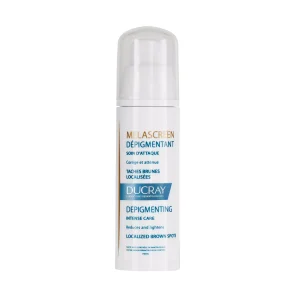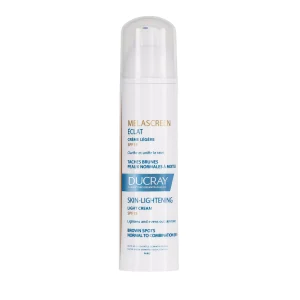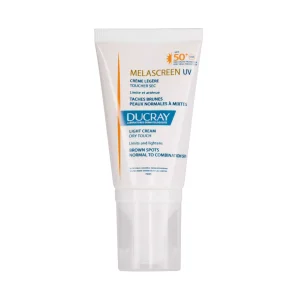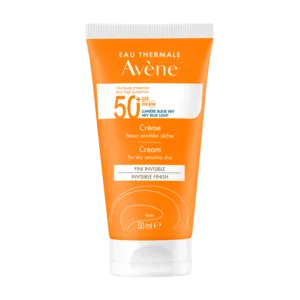
Are you someone who struggles with post-acne scars and hyperpigmentation? There’s no doubt that this skin condition can be frustrating, especially after struggling with active acne breakouts, bothersome pimples, or, even worse, deep, painful, and distressing cystic acne.
We understand that the scars and discolorations caused by acne can be almost as difficult to treat as the acne itself. Fortunately, essential treatments are available to treat and reduce acne scars and improve the appearance of acne discolorations! To find out more about these treatments, read the article below from The Dermo Lab.
Is hyperpigmentation the same thing as scarring?
It’s possible to have both hyperpigmentation and acne scarring, but these are two different skin problems that require very different treatment approaches.
If you need more clarification about the nature of your imperfections, talk to your dermatologist. He or she will be able to help you diagnose your problem and discuss treatment options.
What are acne scars?
Acne scars are marks that can appear after acne has healed. They often appear when pimples are pricked, or when deep-seated imperfections (cystic acne) cause changes in the deeper layers of the skin after a pimple has almost completely healed. Acne scars appear as “ice picks”, “boxcars” or “rolls”, depending on their depression. They develop when collagen production is insufficient to heal the jagged scars caused by inflammation. Acne scars can also appear when collagen production is too high, leading to the formation of bumps.
What is post-inflammatory hyperpigmentation?
Hyperpigmentation occurs when a dark spot appears on the skin after a pimple has disappeared. This is due to an increase in melanin in the outer layers of the skin. This reaction results in skin patches that are darker than they would otherwise be. Hyperpigmentation can be red, purple, brown, white, pink, black, or brown, depending on skin tone or the depth of discoloration.
Acne scars vs. hyperpigmentation
Acne scars involve textural changes on the skin’s surface that have nothing to do with the skin’s natural tone. Acne scars cause a pitted or depressed area, or a proliferation of tissue that leaves a raised scar. Hyperpigmentation, on the other hand, is flat. It is neither depressed nor raised, but simply darker than the surrounding skin.
How to get rid of acne scars?
1- Chemical peels
This type of cosmetic treatment is a form of deep exfoliation that brightens the skin, smoothes skin texture, improves active acne lesions, and renews the skin for an overall healthier appearance.
2- Microneedling with PRP
This technique uses microneedling to promote collagen production and platelet-rich plasma (PRP) to accelerate healing and minimize the appearance of scars and hyperpigmentation.
3- Laser skin resurfacing
Laser skin resurfacing uses the remarkable CO2 laser, which has proven effective in treating various types of scars, as well as wrinkles, fine lines, and skin discoloration.
This innovative treatment involves removing very thin layers of skin to stimulate collagen and elastin production, resulting in smoother, firmer, more even skin.
4- Dermal fillers
Did you know that dermal fillers are quite exceptional for filling in and improving the appearance of deep acne scars?
Dermal fillers are a safe, non-surgical cosmetic treatment that uses an injectable gel or solution to treat specific skin problems. Dermal fillers are generally associated with anti-aging benefits, such as softening fine lines and wrinkles, enhancing natural features for a more youthful appearance, and rejuvenating the face for a revitalized look.
How to get rid of hyperpigmentation?
Acne-related hyperpigmentation occurs when dark spots appear after a blemish has healed. Although hyperpigmentation is harmless, it can be frustrating.
- Vitamin C
Vitamin C is a powerful antioxidant that helps keep your body healthy inside and out. It can help reduce the appearance of scars and even out skin tone by stimulating collagen production.
Vitamin C is considered safe for all skin colors.
- Azelaic acid
Known for its anti-inflammatory benefits, azelaic acid may be a good option if you suffer from both active acne and hyperpigmentation. It can also be effective for raised brown spots.
- Mandelic acid
Mandelic acid is a type of alpha-hydroxy acid (AHA) made from almonds. It is often used in combination with other ingredients as an anti-aging treatment for wrinkles and uneven skin tone. This acid can also be used to treat inflammatory acne.
- Kojic acid
Derived from a type of fungus, kojic acid is considered a natural bleaching agent. It is often used to treat age spots, and may therefore be more effective for brown pigmentation due to acne.
- Niacinamide
Niacinamide is an ingredient made from niacin (vitamin B-3). It is commonly found in anti-wrinkle creams and other anti-aging products because of its ability to promote water retention. It can also increase collagen production.
Our favorite products :
Ducray Melascreen Depigmenting Intensive Care: Enriched with depigmenting active ingredients (azelaic acid and glycolic acid).
Ducray Melascreen Eclat Light Cream SPF15: Enriched with vitamin C and niacinamide.
- Hydroquinone
Hydroquinone is a whitening agent that gets rid of dark spots while slowing melanin release. This ingredient is most effective for dark spots on all skin colors, but you may need to avoid it if you have sensitive skin.
- Chemical peel
For acne-related hyperpigmentation, chemical peels reduce the appearance of dark spots.
- Laser peeling
Considered a resurfacing treatment, laser peeling uses light energy to rework the surface of your skin. The new skin grows back more evenly and smoothly than before.
Laser peels are used in the most severe cases of hyperpigmentation. They are also more effective on fairer skins.
- Microdermabrasion
Microdermabrasion is a less powerful form of dermabrasion. It uses small crystals or a diamond-tipped handpiece to remove the epidermis, which can be effective for hyperpigmentation spots due to acne. Weekly treatments may be required to achieve results, and this method is most effective on fair skin.
It’s important to note that wearing sunscreen after acne treatment is crucial to prevent hyperpigmentation. Once acne lesions have healed, they can leave dark patches known as post-inflammatory hyperpigmentation (PIH). Sun exposure can aggravate post-inflammatory hyperpigmentation, making the spots more visible and persistent. Sunscreens help prevent this hyperpigmentation by blocking the UV rays that trigger melanin production in the skin.
We recommend using one of the following sunscreens:
Ducray Melascreen UV Light Cream SPF50+
Eau Thermale Avène Very High Protection Fluid SPF 50+
Eau Thermale Avène Very High Protection Cream SPF50+
When should you consult a dermatologist?
Consult your dermatologist before trying any home treatment for hyperpigmentation or scars. He or she may be able to recommend a more effective treatment method based on your skin problems. Whatever treatment you choose with your dermatologist, consistency is essential. It usually takes three months to see results. You’ll also need to follow regular treatments, otherwise the hyperpigmentation or scars may reappear.
Last Updated on April 16, 2024













